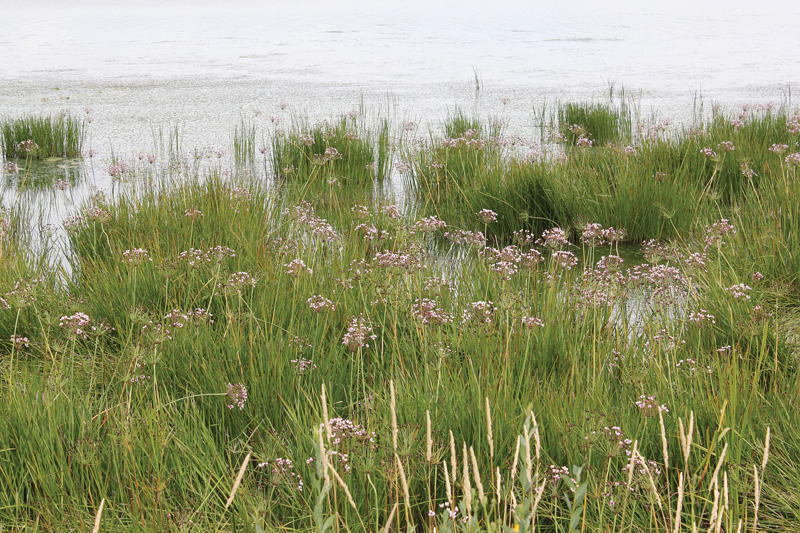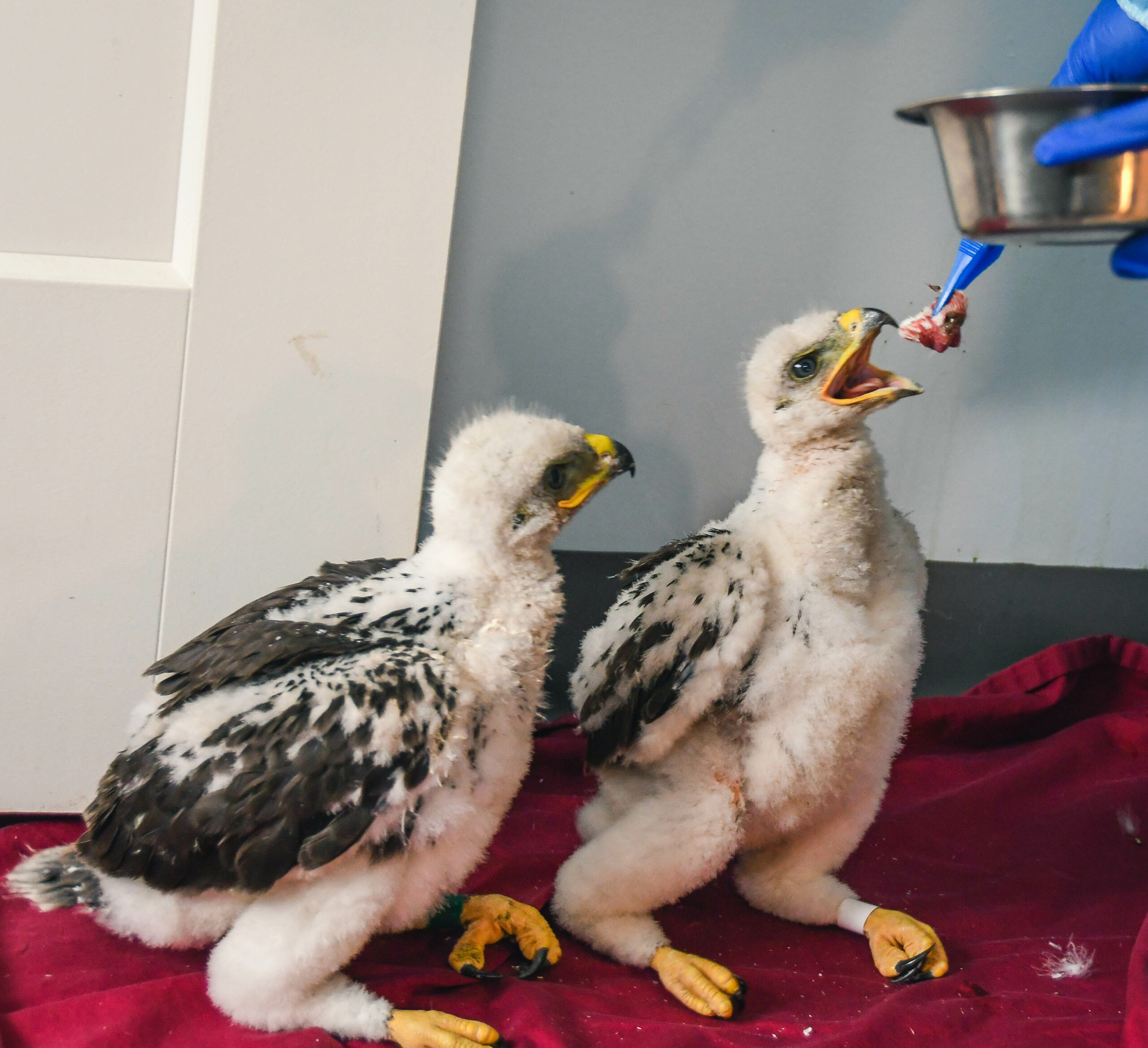Aquatic invasive species (AIS), whether fish, plants or invertebrates, hold the power to disrupt natural ecosystems, degrade recreation opportunities, put infrastructure at risk, and cost a lot of money to control. Alberta is currently facing this challenge with species including Chinese mystery snail and flowering rush, and the threat of potential quagga and zebra mussel invasion. All public members hold the power to stop the introduction or spread of AIS through prevention, detection, and reporting.
In the fall of 2019, a University of Alberta student found an unusually large snail shell on the shore of Lake McGregor, an irrigation reservoir and recreational area in Vulcan County, Alberta. The student took it to a professor who in turn sent photos to Alberta Environment and Parks who confirmed it was a Chinese mystery snail. This detection and reporting by a member of the public triggered the Government of Alberta (GoA) to respond.
Investigation showed the snails are well established in the lake but isolated in its north bay.
“They seem to radiate from the boat launch,” said GoA Aquatic Invasive Species Specialist, Nicole Kimmel. “We suspect it was probably introduced from a boat at some point, but it could also have been driven down and dumped from an aquarium.”
Chinese mystery snails are prolific reproducers with the potential to outcompete native species and the robust shells could clog irrigation infrastructure. Kimmel explained that the shells are sharp when broken and could make it unsafe to walk or run barefoot on the beach and some research shows these snails can host parasites and diseases that may affect human or wildlife health.
The biology of this snail makes eradication difficult, so containment is the priority. To control the spread from this reservoir to other water bodies, the GoA collaborated to deploy a mobile watercraft cleaning unit to Lake McGregor.
“This is a trailer unit that has an air compressor, a wet vac, a picker tool, a brush to scrub equipment and boats, as well as a boat plug removal tool,” explained Kimmel about the $40,000 solar-powered unit.
Lake McGregor is a water storage reservoir for the Bow River Irrigation District. The District graciously offered supervision and maintenance of the unit while it’s in place.
The unit was deployed late in the 2020 boating season and will be in place for the full season in 2021. Watercraft users should clean, drain and dry all their equipment when they pull out of Lake McGregor to prevent the spread of Chinese mystery snails to other locations.
AIS can also include plants escaped from garden water features, like the beautiful but harmful flowering rush.
The Western Irrigation District (WID) provides water to 95,000 acres of farmland and several municipalities east of Calgary. WID’s Watermaster, Brian Sander explained that the District has been battling flowering rush in their irrigation system for about 6 years.
Left to spread, flowering rush can clog up waterways and slow flow. This is a concern for irrigation infrastructure and water delivery, but also decreases accessibility and enjoyment for recreational users of reservoirs like Lake Chestermere.
Sander explained that this results in a fair bit of work to monitor and remove plants. Many methods of removal have been tried, but hand pulling seems to be the most effective for the WID.
“We GPS the location of every plant we see,” said Sander. “We have that logged and then go back the next year after we’ve harvested some of the plants to see if they’re spreading.”
It is critical that flowering rush is removed carefully.
“(Flowering rush) is really sensitive to disturbance,” said Kimmel. “Even wildlife swimming through it can knock off a little bit of roots that float away and start new populations.”
“The annual cost (to the WID) for hand removal of flowering rush is in the $6000 to $7000 range,” said Sander, noting that they’re seeing success with control in the canal systems.
While no economic value has been assessed for the impact of Chinese mystery snails or flowering rush, a 2013 study projected that if zebra or quagga mussels take hold in Alberta, management could cost up to $75 million.
These mussels have not been found in Alberta waters yet, and prevention is a top priority. The GoA will be running boat inspection stations along Alberta’s borders this summer.
Ultimately, Kimmel would like people to treat every water body as if it potentially has invasive species in it.
“You don’t have to worry about what species is in the water as long as you’re cleaning, draining and drying your equipment between locations,” said Kimmel. “You’re reducing the potential of aquatic invasive species being moved around through those simple key actions.”
The GoA has a list of over 50 fish, plant and invertebrate species that are prohibited or of concern. These are available online, or through the EDDMaps Alberta smartphone app. Anyone with aquariums, ponds or who spend time around the water should make themselves familiar with the list.
If you see something you suspect is an aquatic invasive species, call 1-855-336-2628 to report it. Photos and detailed GPS location coordinates can greatly help the response.







